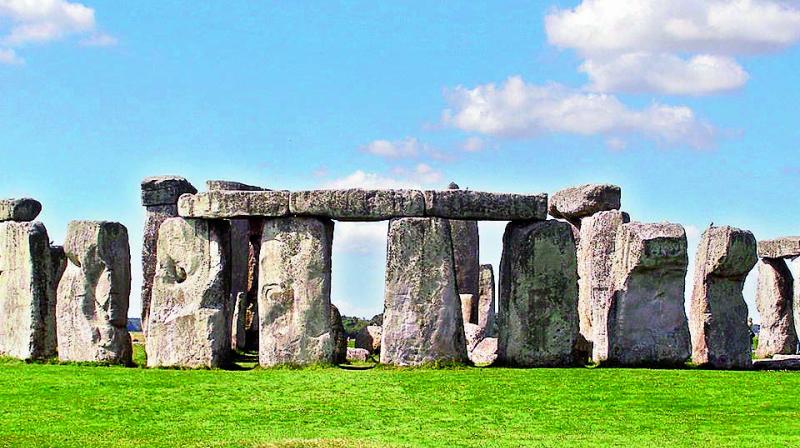Stonehenge quarried 5,000 years ago

London: The smaller ‘bluestones’ used to build the Stonehenge were quarried 5,000 years ago and transported over land from almost 290 km away, according to scientists who have pinpointed the exact sources of the stones.
Geologists have long known that 42 of Stone-henge’s smaller stones, known as ‘bluestones’, came from the Preseli hills in Pembrokeshire, west Wales.
A study, published in the journal Antiquity, pinpoints the exact locations of two of these quarries, and reveals when and how the stones were quarried.
“What’s really exciting about these discoveries is that they take us a step closer to unlocking Stonehenge’s greatest mystery — why its stones came from so far away,” said Mike Parker Pearson, a professor at University College London in the UK.
“Every other Neolithic monument in Europe was built of megaliths brought from no more than 16 km away,” Parker Pearson said.
“We’re now looking to find out just what was so special about the Preseli hills 5,000 years ago, and whether there were any important stone circles here, built before the bluestones were moved to Stonehenge,” Parker Pearson said.
The largest quarry was found almost 290 km away from Stonehenge on the outcrop of Carn Goedog, on the north slope of the Preseli hills.
“This was the dominant source of Stonehenge’s spotted dolerite, so-called because it has white spots in the igneous blue rock. At least five of Stonehenge’s bluestones, and probably more, came from Carn Goedog,” said Richard Bevins, a geologist at National Museum of Wales. In the valley below Carn Goedog, another outcrop at Craig Rhos-y-felin was identified by researchers as the source of one of the types of rhyolite — another type of igneous rock — found at Stonehenge.

